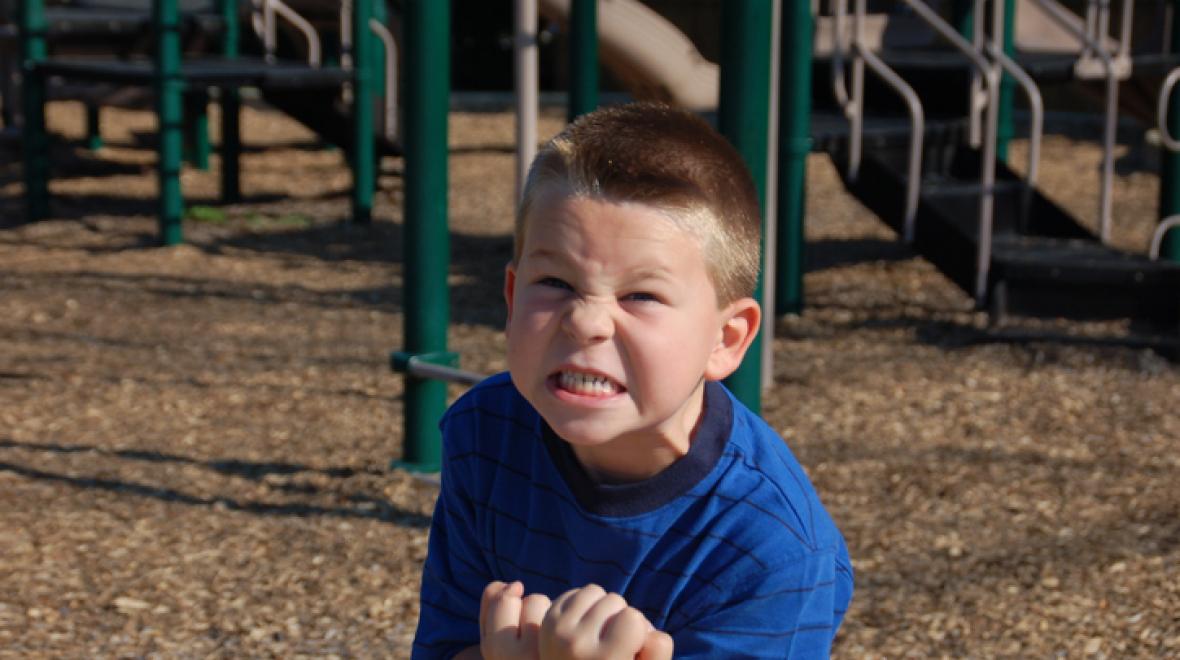
It’s the worst feeling: Your kid hits another kid (or bites or embeds fingernails in or otherwise mauls another kid) during a play date. You make sure the other kid is okay, and now you turn to yours. The pressure’s on: The kid’s parent is looking at you, or pretending not to look at you. You want to prove that you’re handling it.
What do you say?
- “Hey! We don’t hit!”
- “Say you’re sorry.”
- “Time-out. Right. Now.”
- “I don’t know what’s going on... he didn’t nap today...”
- All of the above.
None of them seem very satisfying, do they? The lecture feels a bit helpless, given how many times you’ve said it before. The apology isn’t exactly empathetic if it isn’t the kid’s idea. The time-out isn’t effective discipline, at least not as it’s usually done. The excuses feel lame.
You could end the play date, and that might be necessary if your kid is truly tired or out of control. (“Playing with friends isn’t working for you right now. We’ll try again another day.”) But what about when it’s kind of a minor infraction? I’ve been using Sandy Blackard’s Language of Listening, my favorite positive-parenting framework.
The first step: Say what you see.
- “You hit your friend. You were upset.”
- “You’re feeling mad. You really want that toy.”
- “You were angry because he wanted to be alone, and you wanted to play. You hit him, and now he really doesn’t want to play. Rats!”
The hard part is to say your observation without judgment. But it’s important because the point here is to connect before you correct, so you don’t get into a power struggle.
The second step: Give a boundary and can-do.
- “People are not for hitting. There must be something you can hit to get that frustration out. Pillows are okay.” (You might get the kids to rewind and replay the scene, this time helping your child hit a pillow. Actions speak louder than words, especially for a kid. Then, Blackard says, guide them to resolve the original problem peacefully.)
- “Hitting is not okay. Your friend has the toy and you want the toy. Wonder what you could do…” (Let the kids, age 3 and up, come up with an answer.)
- “Hitting isn’t getting you what you want! Hmm, you want to play and he wants to be alone. Must be something you can do that would work for both of you.”
As things settle: Name a strength.
- “You know how to calm down.”
- “You’re taking turns.”
- “You found a compromise.”
My previous post "I’m gonna hit him" was about a revealing attempt at positive discipline with my 3-year-old. Blackard helped me see where things went awry. But that situation happened a day or two after the hitting, so I wanted to circle back and talk about what to say in the moment.
If this way of parenting is new to you, you might be thinking: Where’s the swift punishment? Why go to all of this effort? Positive discipline is more effective for a few reasons:
You’re acknowledging your child’s feelings. That validation literally relaxes the vagus nerve. When you model naming emotions, that helps your child recognize and name emotions. Naming our emotions also helps get our brains out of fight-or-flight mode. (See “Label intense emotions” and “Emotion first, problem second” in my book, "Zero to Five: 70 Essential Parenting Tips Based on Science".)
We can’t learn when we’re in fight-or-flight. Finally, problem-solving and pointing out strengths helps teach your child what to do, tunes the internal moral compass, and builds skills for the long-term (see “Teach instead of punish”).
What about making amends? The real lesson, after all, is not that we should get in trouble when we hurt someone but that we need to make it right and seek a solution.
Let your child know: “When we hurt someone, we ask, ‘Are you all right?’ We try to make them feel better.” You might model it yourself by giving a hug or saying, “I’m so sorry that happened.”
Sometimes our child will try it out for themselves right then. But it’s much harder to get to that frame of mind if we don’t first address our child’s emotions.
This story originally published on Zero to Five.











